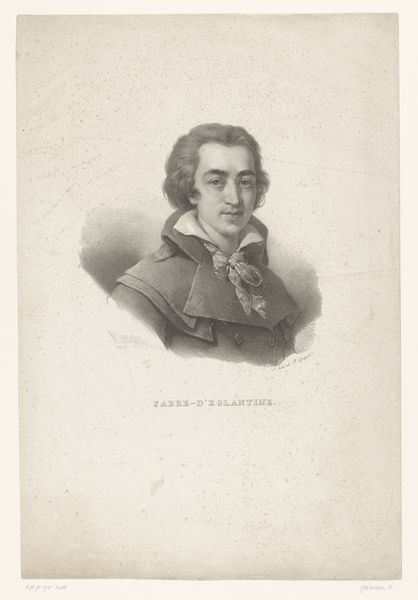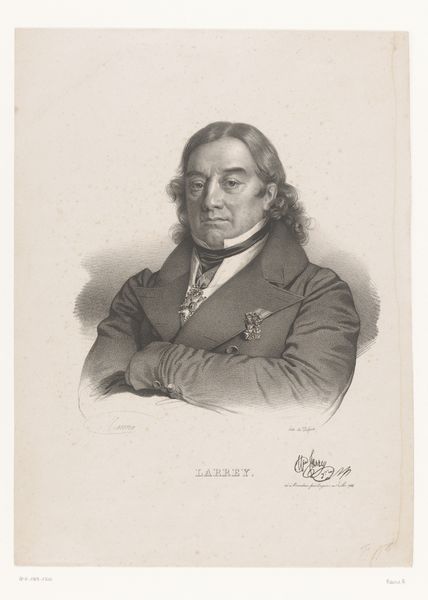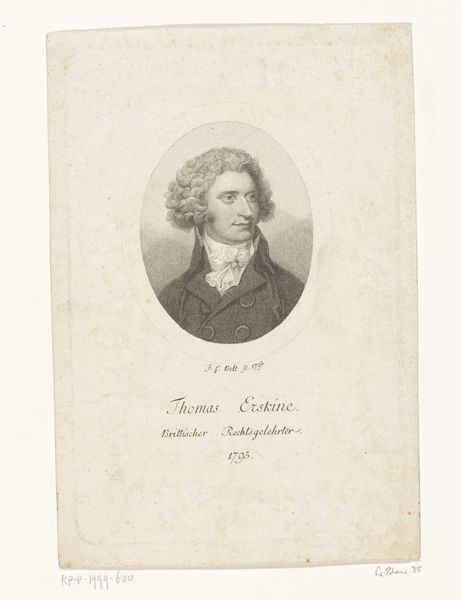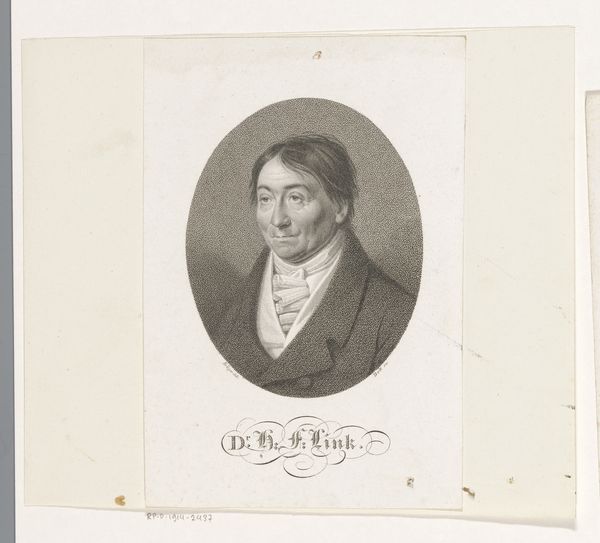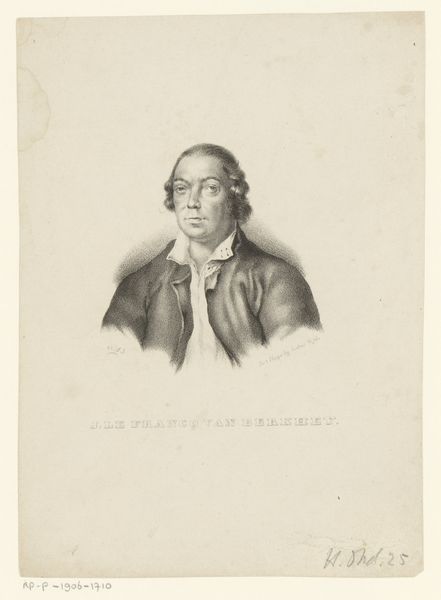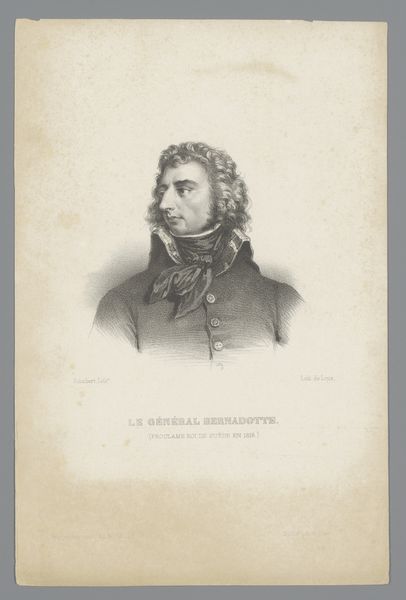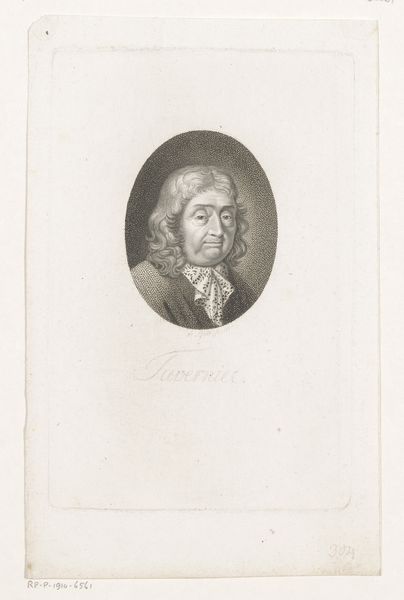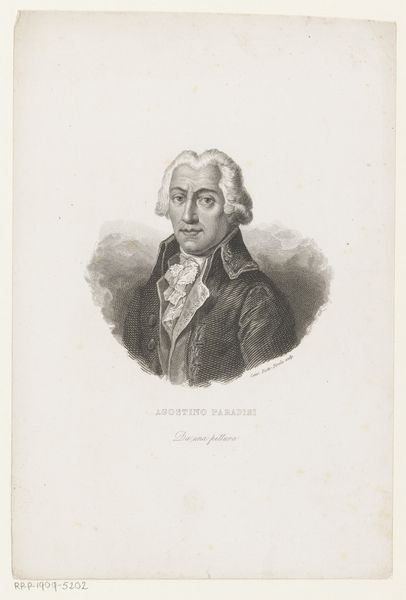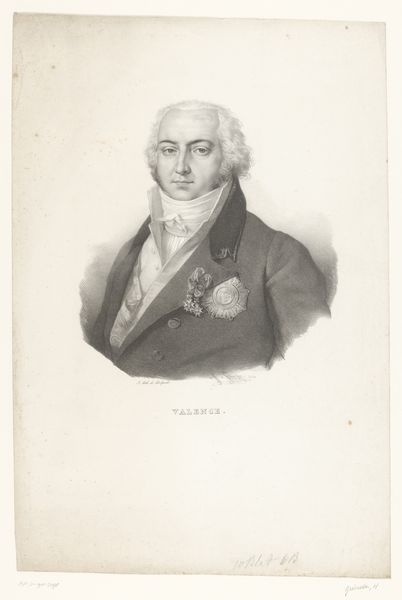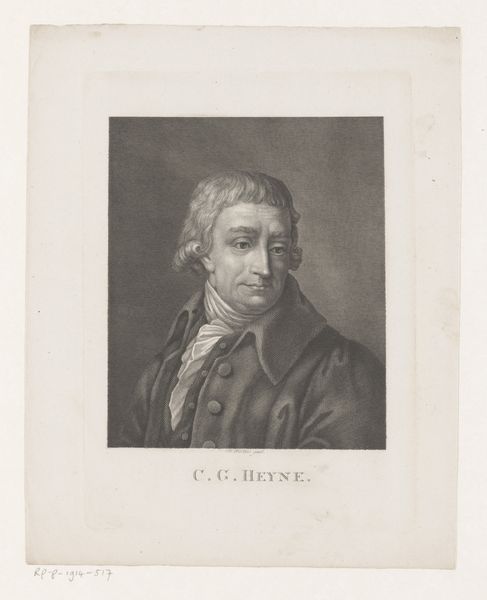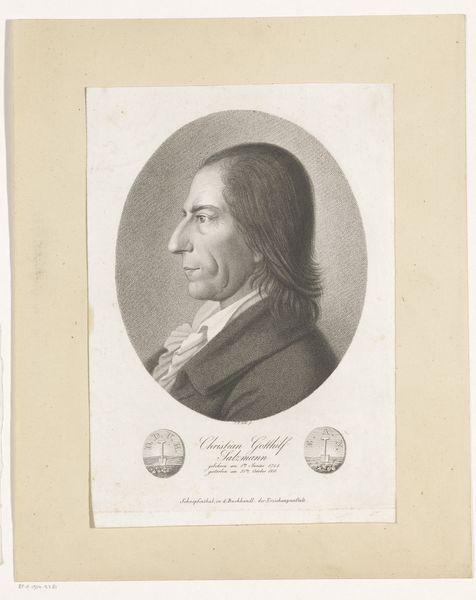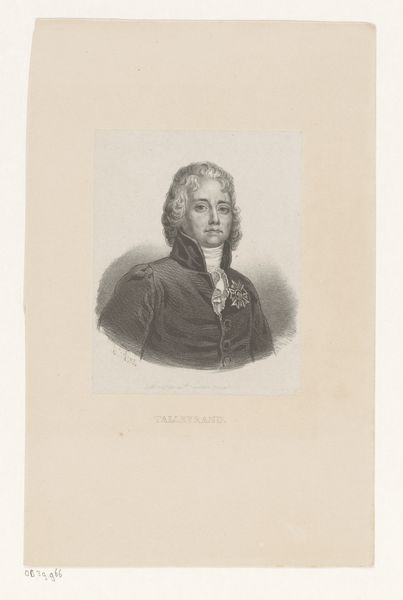
print, engraving
#
portrait
#
neoclacissism
# print
#
caricature
#
portrait drawing
#
engraving
Dimensions: height 470 mm, width 327 mm
Copyright: Rijks Museum: Open Domain
Nicolas Maurin made this portrait of Charles Barbaroux using lithography, a printmaking technique, sometime in the first half of the 19th century. Lithography involves drawing with a greasy substance on a flat stone or metal plate, then treating the surface so that ink adheres only to the drawn areas, allowing for the image to be printed. Maurin’s decision to use lithography is significant. Unlike traditional engravings or etchings, lithography enabled a more direct, freehand approach. The velvety blacks and soft gradations of tone seen in this portrait are characteristic of the medium. The technique allowed for the relatively quick and inexpensive reproduction of images, contributing to the rise of mass media and visual culture. This was transformative, as it democratized image production, making art more accessible. Considering the materials and making of this print, it allows us to appreciate how the process of production is embedded with cultural significance, and it highlights the relationship between art, technology, and society.
Comments
No comments
Be the first to comment and join the conversation on the ultimate creative platform.
